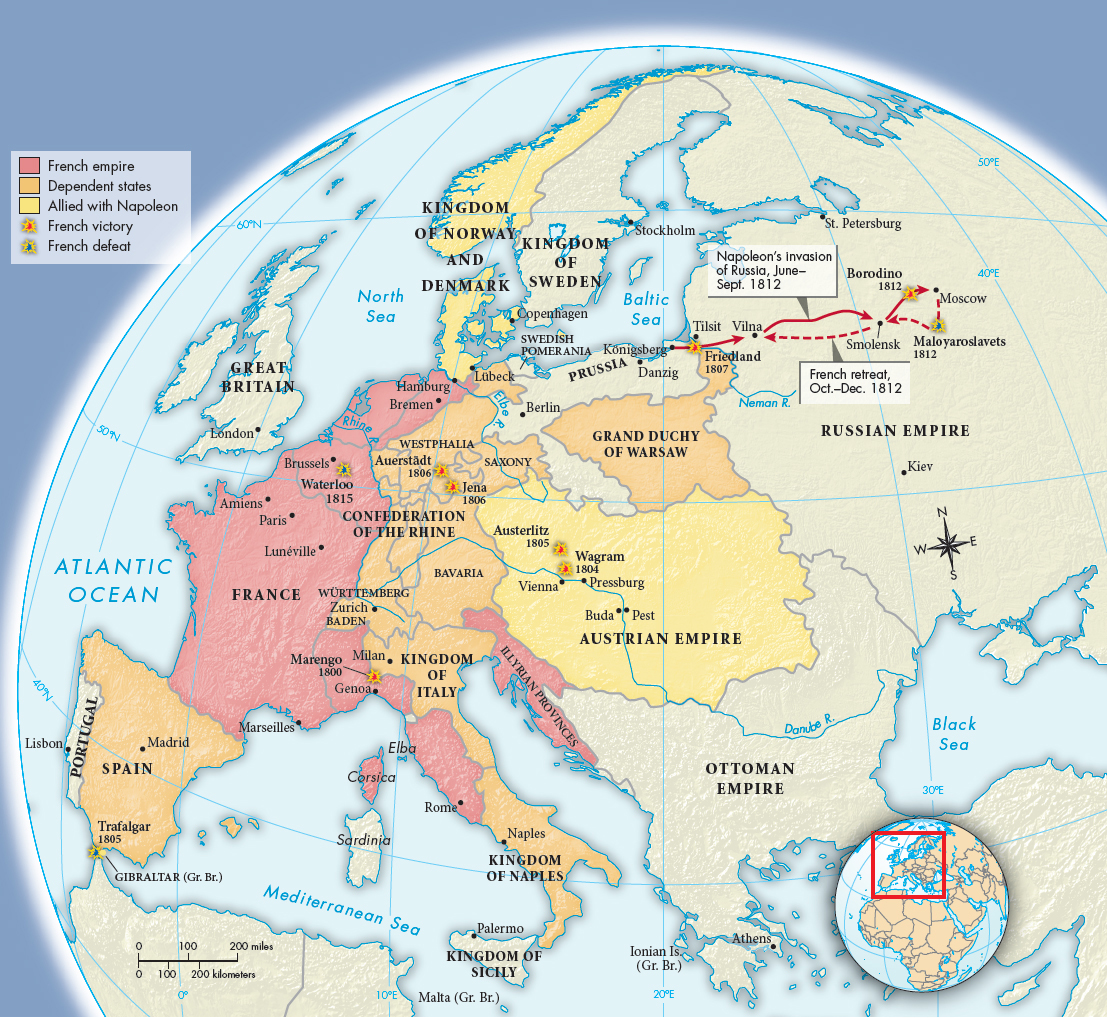Understanding World Societies:
Printed Page 662
The Grand Empire and Its End
Napoleon’s so-

ANALYZING THE MAP: How had the balance of power shifted in Europe from 1715 to 1812? What changed, and what remained the same? What was the impact of Napoleon’s wars on Germany, the Italian peninsula, and Russia?CONNECTIONS: Why did Napoleon achieve vast territorial gains where Louis XIV did not?
In the areas incorporated into France and in the satellites, French rule sparked patriotic upheavals and encouraged the growth of reactive nationalism. The first great revolt occurred in Spain. In 1808 Napoleon deposed Spanish king Ferdinand VII and placed his own brother Joseph on the throne. A coalition of Catholics, monarchists, and patriots rebelled against this attempt to turn Spain into a satellite of France. French armies occupied Madrid, but the foes of Napoleon fled to the hills and waged guerrilla warfare. Events in Spain sent a clear warning: resistance to French imperialism was growing.
Yet Napoleon pushed on. In 1810, when the Grand Empire was at its height, Britain still remained at war with France, helping the guerrillas in Spain and Portugal. The Continental System was a failure. Instead of harming Britain, the system provoked the British to set up a counter-
Napoleon’s invasion of Russia began in June 1812 with a force that eventually numbered 600,000. Originally planning to winter in the Russian city of Smolensk, Napoleon recklessly pressed on toward Moscow (see Map 22.2). The Battle of Borodino that followed was a draw. Alexander ordered the evacuation of Moscow, which the Russians then burned in part, and he refused to negotiate. Finally, after five weeks in the scorched city, Napoleon ordered a disastrous retreat. When the frozen remnants of Napoleon’s army staggered into Poland and Prussia in December, 370,000 men had died and another 200,000 had been taken prisoner.
Leaving his troops to their fate, Napoleon raced to Paris to raise another army. Meanwhile, Austria and Prussia deserted Napoleon and joined Russia and Britain in the Treaty of Chaumont in March 1814, by which the four powers formed the Quadruple Alliance to defeat the French emperor. Less than a month later, on April 4, 1814, a defeated Napoleon abdicated his throne. The victorious allies then exiled Napoleon to the island of Elba off the coast of Italy.
In February 1815 Napoleon staged a daring escape from Elba. Landing in France, he issued appeals for support and marched on Paris. But Napoleon’s gamble was a desperate long shot, for the allies were united against him. At the end of a frantic period known as the Hundred Days, they crushed his forces at Waterloo on June 18, 1815, and imprisoned him on the island of St. Helena, off the western coast of Africa. The restored Bourbon dynasty took power under Louis XVIII, a younger brother of Louis XVI.
>QUICK REVIEW
What kind of state did Napoleon create? From which social groups did he draw his support?